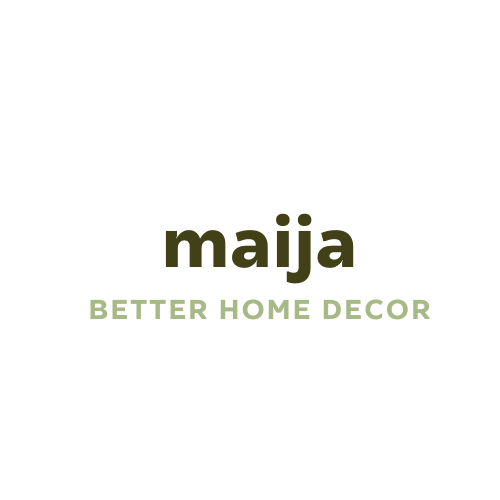
A travertine coffee table gives you timeless character, real-stone durability and everyday practicality. Choose the right size for your sofa, seal it routinely, and style it with simple layers. You get a long‑lasting centrepiece that elevates the room without effort.
Table of content
What travertine is, in simple terms
Travertine is a type of natural limestone formed by mineral-rich springs. It has tiny pores and natural surface pits that can be left open for texture or filled for a smoother, easier‑to‑clean surface.
Filled travertine: Pores are filled with tinted resin or grout, then honed for a sleek look that suits modern interiors and low‑maintenance households.
Unfilled travertine: Pores are left open for a more organic, rustic look with a tactile feel.
Common finishes: Honed (matte, low‑glare), polished (higher sheen), brushed or tumbled (softer edges and subtle patina).
Good to know: Honed, filled travertine is the most common choice for coffee tables because it disguises fingerprints and small marks, photographs beautifully, and cleans quickly
Why travertine works so well in living rooms
Travertine brings soft neutral tones, natural veining and subtle texture that sits comfortably with minimalist, contemporary, coastal or Mediterranean-inspired interiors. Each slab is unique, so your table feels bespoke rather than mass‑produced.
Key benefits:
Enduring style: Natural stone reads as considered and luxurious, yet relaxed.
Hardwearing surface: Suitable for daily use with the right care routine.
Design chameleon: Pairs with timber, linen, boucle, leather, metal and glass.
Long service life: Quality stone keeps its appeal for years, which is why it is often considered an investment piece.
Incredible Durability 💪
Let’s talk about the practical side of travertine. This stone has been used in architecture for centuries (think ancient Roman buildings!), and it’s still standing the test of time. When you bring travertine into your living room, you're investing in a coffee table that can withstand everyday use and still look stunning years down the line.

Travertine is a strong material, but it's also a bit softer than some other stones like granite. This means it can absorb impact better and isn’t as prone to cracking. Just be sure to care for it properly—seal it to protect against stains and wipe up spills right away, and you’ll have a table that holds up beautifully over time.
Why it’s worth it: You’re not just buying a coffee table for now—you’re investing in a piece that can last for generations with proper care.
Versatile Design 🌟
Travertine coffee tables come in all shapes and sizes, making them incredibly versatile. Whether you prefer a sleek, minimalist slab or a more intricate, sculpted design, there’s a travertine table out there that fits your style.

Travertine also plays well with other materials. Pair it with a modern glass top for a chic look, or opt for wood or metal accents to create a more balanced, natural aesthetic. This stone is a great way to bridge different design elements in your living room, making it a versatile choice that works with almost any decor theme.
Why it’s worth it: The versatility of travertine means it will adapt to your evolving style. No need to replace your coffee table when you refresh your decor—travertine fits right in, no matter how your tastes change!
Boosts Home Value 💰
Quality furniture can be an investment, and travertine coffee tables definitely fall into this category. When you invest in a high-quality piece, it not only elevates the look of your living room but can also increase your home’s value. Travertine is seen as a luxurious material, so having it as part of your home’s interior can give it a high-end touch.

While trends come and go, natural stone furniture, like travertine, has a timeless appeal that holds its value. Plus, if you ever decide to sell your home, these types of investment pieces can make a lasting impression on potential buyers.
Why it’s worth it: Not only are you improving the beauty and functionality of your living room, but you’re also adding to the long-term value of your home.
Low Maintenance, High Impact 🧽
Despite being a natural stone, travertine is relatively easy to maintain. With a little bit of attention, like sealing the surface to protect against stains and wiping it down regularly, you can keep your travertine coffee table looking as good as new. It’s a material that can handle daily wear and tear without losing its charm, and its natural patterns help hide minor imperfections that can come from everyday use.

For homeowners who love low-maintenance yet high-impact pieces, travertine is a solid choice. It’s tough, beautiful, and doesn’t demand constant attention.
Why it’s worth it: Travertine offers the perfect balance between easy maintenance and stunning visual impact.
Eco-Friendly and Sustainable 🌍
If sustainability is important to you, then you’ll be pleased to know that travertine is an environmentally friendly option. Being a natural stone, it requires minimal processing compared to synthetic materials. Plus, it’s long-lasting, meaning you won’t be replacing your coffee table anytime soon, which reduces waste.

Choosing travertine is not only an investment in your home’s style and function but also a way to incorporate eco-conscious choices into your decor.
Why it’s worth it: A travertine coffee table is a sustainable, long-lasting choice that’s good for both your home and the environment.
Size and placement: get the proportions right
A beautiful table looks its best when the measurements are dialled in. Use these living‑room rules of thumb when you choose:
Height: Aim for the same height as your sofa seat or up to about 5 cm lower. This keeps the table comfortable to reach.
Length: Use roughly two‑thirds of your sofa length for balanced proportions.
Clearance: Leave 30–45 cm between the sofa front and the table so legs can pass easily.
Rug fit: The table should sit fully on the rug with at least 10–15 cm of rug visible around it to frame the setting.
Quick examples:
3‑seater sofa around 210 cm long → coffee table around 140 cm in length.
Sectional with chaise → consider a round or square table that fits the internal footprint without blocking walkways.
Shapes and bases that suit different rooms
Rectangular slabs work with classic three‑seater sofas and narrow rooms.
Round tables soften angular furniture and encourage easy movement.
Square blocks ground a modular sofa and make styling easy with trays and books.
Pedestal bases give legroom and feel visually lighter in compact spaces.
Mixed‑material designs combine travertine with timber or metal for contrast.
Everyday care that actually works
Travertine is simple to live with if you follow a light, consistent routine.
Do this weekly:
Dust with a soft cloth or microfibre duster.
Wipe with a damp cloth and a pH‑neutral stone cleaner or mild soap.
Protect daily:
Use coasters for drinks, especially citrus or wine.
Use placemats or trivets under hot dishes.
Wipe spills promptly to prevent marks.
Seal routinely:
Apply a penetrating stone sealer when water no longer beads on the surface. For most living rooms, this is typically every 6–18 months depending on use, finish and product instructions.
Stain first‑aid:
Water rings: Let the surface dry, then lightly buff with a soft cloth. If needed, apply a stone‑safe polishing compound as per the manufacturer.
Oil spots: Blot, then use a stone‑specific poultice product to draw out the stain.
Etch marks from acids: These look like a dull patch rather than a dark stain. Prevent them with coasters. For existing etches on honed finishes, consult a stone care professional for re‑honing if home remedies do not work.
Practical buying checklist
Before you order, run through this list so your table arrives and settles perfectly.
Finish and fill: Decide between honed filled for a smooth look or unfilled for texture.
Edge profile: Straight edges look crisp, bullnose reads softer, chamfered edges resist chipping.
Colour tone: Ivory, beige, silver and walnut are common shades. Choose a tone that complements your sofa fabric and wall colour.
Dimensions: Confirm height vs sofa seat height, length vs sofa length, and room clearance.
Weight and floors: Travertine is heavy. Plan a two‑person or white‑glove delivery. Use felt pads or a rug to protect timber floors.
Surface protection: Add quality coasters, placemats and a suitable stone sealer to your basket.
Care plan: Keep a pH‑neutral cleaner and a soft cloth in the living room for quick wipe‑downs.
Styling tips for a lived‑in look
Layer with a tray: Corral candles, remotes and a small vase to keep the surface tidy.
Play with height: Stack 2 or 3 books, add a sculptural object, and a small bunch of seasonal stems.
Mix textures: Linen cushions, wool rugs and timber accents balance the stone’s cool smoothness.
Leave negative space: Keep a clear zone for mugs and plates so the table feels usable, not staged.
Frequently Asked Questions
Why is a travertine coffee table a good investment?
Travertine coffee tables offer timeless elegance, durability, and unique natural patterns, making them both a stylish and long-lasting home decor piece.
How do I maintain a travertine coffee table?
Dust regularly, clean with pH-balanced stone cleaner, seal yearly, and use coasters to prevent stains and scratches for easy maintenance.
Is travertine durable for a coffee table?
Yes! Travertine is strong, durable, and can resist moderate impacts. With proper care, it’s a practical and long-lasting coffee table choice.
Does travertine blend with different decor styles?
Absolutely! Travertine’s neutral tones and unique textures complement various decor styles, from modern to rustic, adding versatility to your living room.
Should I seal my travertine coffee table?
Yes, sealing helps protect travertine from stains, moisture, and scratches, preserving its beauty and extending its lifespan.
Can travertine scratch or stain easily?
Travertine can be vulnerable to scratches and stains if left unsealed, but regular sealing and careful maintenance will protect it.
Final Thoughts: Why Travertine is the Ultimate Investment Piece
A travertine coffee table is a quietly luxurious anchor for your space. Match the size to your sofa, choose a finish that fits your lifestyle, and follow a simple care routine. You will enjoy a durable, beautiful focal point for years.







